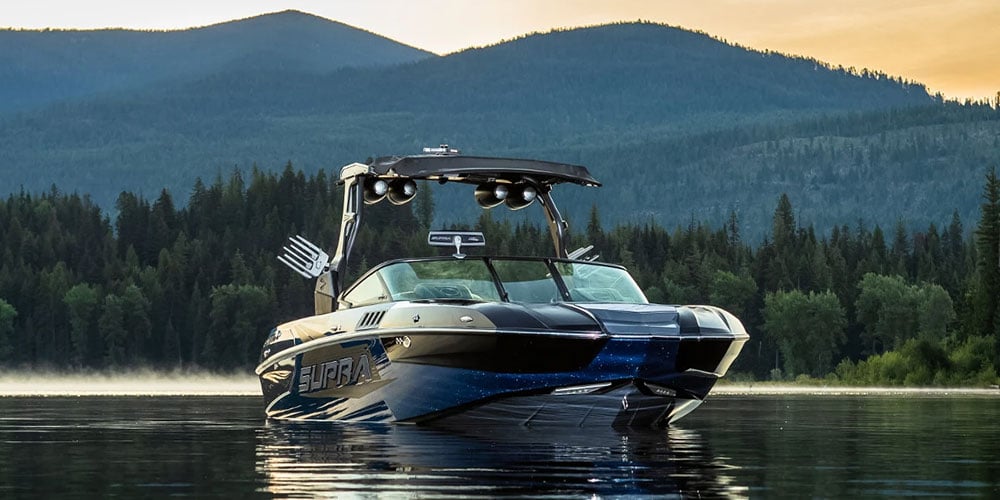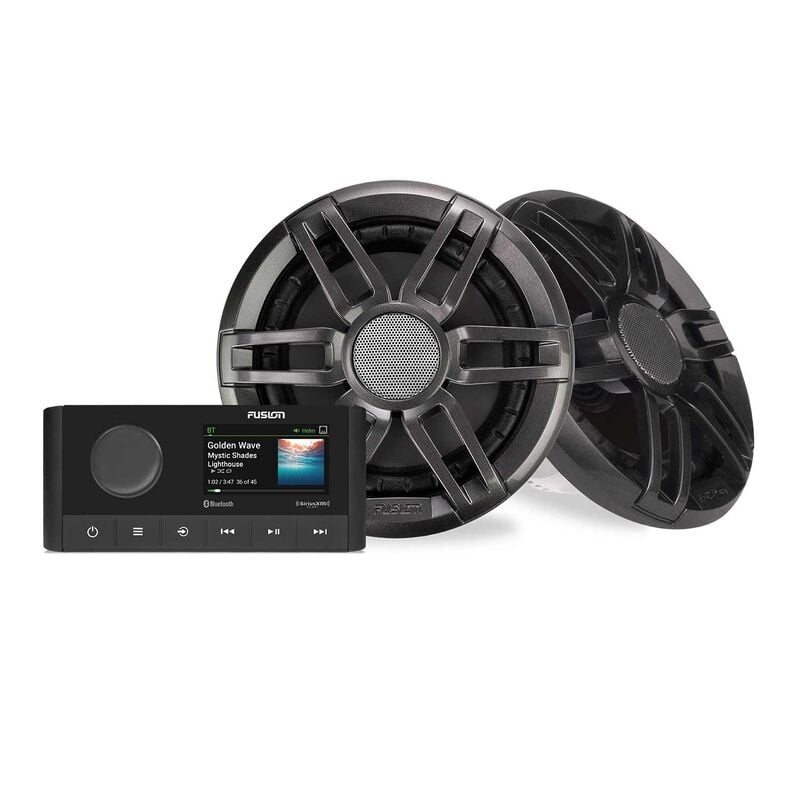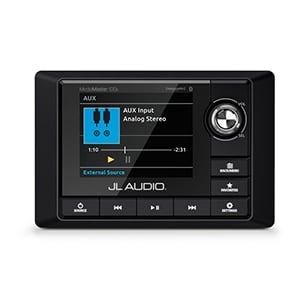
Marine stereos are designed to stand up to demanding marine conditions. With corrosion resistant components and water resistant or waterproof construction marine audio systems are built to last on your boat. The size of the stereo, what inputs you need and whether you need satellite-radio compatibility or not are all part of what marine stereo will work best on your boat. We'll walk your through everything you need to consider.
- Single DIN, Double DIN or Black Box
- Remote Server Controlled Through Your Multifunction Display
- Inputs and Data Sources
- Waterproof Protection
- Satellite-Ready Stereos
Single DIN, Double DIN or Black Box
Do you want a receiver that will fit into a standard DIN-sized opening? The US standard size is 2" tall and 7" wide, and most of our assortment fits that cutout, so your new stereo should fit without the need for a Sawzall to modify your dashboard. Some radios are built to the double DIN measurements of 4" tall and 7" wide. Others are oversized in the vertical dimension.

Marine stereo systems like this kit from Fusion come with everything you need to get up and running on your boat.
Complete marine stereo systems are a great choice as well especially if you're installing on a boat that doesn't have any existing components. These packages bundle a receiver and speakers together so you know your setup will pair well together right out of the box.
A Remote Server Controlled Through Your Multifunction Display
Using a remote server eliminates the need for a dedicated stereo head unit at the helm of your boat. Marine audio servers use NMEA 2000 to communicate with your multifunction display allowing you to control audio levels from the helm. This a great option for boats that have limited dash space or if you prefer less displays at the helm for a cleaner look.
Inputs and Data Sources
Would you like to connect your iPhone, Android or iPod? Most marine stereos are bluetooth capable allowing you to wirelessly stream music from the library on your phone or iPod or from apps like Spotify or Pandora® while your phone is safe in a water tight compartment. USB and Auxilary ports are also included on most radios and allow you to plug your device in to the reciever directly.
Internal dock: You can choose a receiver with an internal docking station to keep your digital device safe and dry.
Advanced features: Many stereos can be controlled wirelessly from an included remote control or from an app on your phone allowing you to change the tunes from anywhere on the boat. Remote servers can be controlled through some NMEA 2000 compatible multifunction displays eliminating the need for a dedicated stereo head unit at the helm.
Waterproof Protection

JL Audio's MM100s-BE MediaMaster marine stereo is IP66 rated and prepared for life on your boat.
Audio equipment in your car lives inside a waterproof, climate-controlled box. Your boat punishes audio components with spray, moisture, salt and UV radiation. The marine environment will kill an automotive-grade stereo in a few months or a single season under the best conditions, so saving money with a cheap car stereo is a mistake. What should you look for?
Marine stereos are rated either spray-resistant or waterproof. Look for CD slots that are sealed with rubber gaskets or hidden behind a water resistant faceplate. Faceplates can (in theory) withstand either spray or complete immersion, depending on the receiver. In reality, marine stereos often aren’t rated by clear, objective waterproofing standards, but are “marinized” for surviving in salt-water environments. Some receivers, especially those from poly-planar and Fusion, come with a submersible IP waterproof rating.
Corrosion-resistant materials on good-quality marine units resist rust and salt water. Stereos include conformal coating of PCBs with a sealing coat of epoxy or urethane encapsulating circuit boards and processors. Plastic cases are UV-resistant. Speaker cones are polypropylene, not paper. Key metal components are often stainless steel. Wire is tin-plated and contacts are often gold-plated.
Other Articles on Boating Entertainment Systems
Satellite-ready Stereos
SiriusXM Satellite Radio
SiriusXM Satellite Radio, siriusxm.com, provides 100 percent commercial-free digital satellite radio with a reception footprint (the area within satellite line-of-sight range) that covers the United States (including Alaska), Canada, and the upper third of Mexico.
Satellite radio is free from commercials and FCC restrictions, unlike AM and FM, so the variety of programming is superior. Just about any kind of music is available in every genre. The sound is digital quality (equivalent to an MP3 with varying amounts of signal compression, but not quite as spectacular as a CD) so you won’t hear static. Since the reception is the same across the continental U.S., you do not need to change your station presets if you travel from one place to another.
SiriusXM Satellite Weather Services
For boaters, SiriusXM has two types of subscription-based marine weather services. Sirius Marine Weather is available within the continental United States only. Navico and Raymarine make weather modules that receive four types of data.
XM WX Marine Weather from Garmin
Twenty data products for marine weather are available through customized marine subscription packages. Continuously updated graphical weather information, include these products and more: High-Resolution NEXRAD Radar, Lightning, Satellite Imagery, Buoy Data, Sea Surface Temperatures, FishBytes™ fish location data. See the Garmin GXM™ 53 Weather & Audio XM Satellite Receiver.
Final Note: Security features like detachable faceplates help protect your stereo from theft.